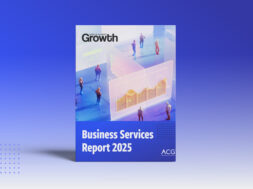Expanding Internationally Requires Employer Compliance, FX Awareness
During a virtual event presented by ACG in May, panelists outlined some of the top employment and currency risks facing deal-makers and how to get ahead of them.

This article originally appeared in the Summer 2021 issue of Middle Market Growth. Find it in the MMG archive.
The world may be your oyster when it comes to cross-border mergers and acquisitions, but there is a sea of complexity that could threaten the success of a transaction without adequate planning and support.
When acquiring companies in new geographies, buyers often are caught off guard by complications stemming from foreign currency markets and nuanced employment laws. During a virtual event in May titled “Streamlining the Cross- Border M&A Process,” presented by ACG, Globalization Partners and Cambridge Global Payments, panelists outlined some of the top employment and currency risks facing deal-makers and how to get ahead of them.
Buyers and sellers need to understand which regulations apply to their teams and agree on who pays for benefits, adjustments, extra costs, and of course, in worst-case scenarios, severance, before closing the deal negotiations.
Diane Albano
Chief Revenue Officer, Globalization Partners
Sealing the Deal
As a company enters a cross-border transaction, the most important thing it can do is partner with local legal and human resources specialists, according to Diane Albano, chief revenue officer for Globalization Partners, whose AI-driven employer of record platform helps companies to grow a global workforce. Globalization Partners was the event’s presenting sponsor.
Local expertise is the best route to smooth employee transfers and deal negotiations, and it can help companies avoid fines after a cross-border transaction, Albano said. She recommended seeking experts before due diligence and engaging them throughout the transaction.
Foreign currency is another area to consider before acquiring a business outside of one’s home market, and advance planning is key, according to Andrew Howlett, channel partners and alliances manager at Cambridge Global Payments, a provider of integrated cross-border payment services and currency risk management solutions, and a sponsor of the event.
“Essentially, you’ve got to know: When are you going to be planning to purchase the currency? What are going to be the compounding risks involved when you’re looking to purchase that currency and actually deliver it? How likely is the project to go ahead? These are all questions that vary on a case-by-case basis,” he said.
Prior to a transaction, buyers should also consider whether to use a foreign currency hedge, and if so, what type. Further, they will need to determine whether to hedge against things like dividend and profit repatriation.
Understanding a new market that a company plans to enter will prevent future surprises related to foreign currency exchange. For example, deal-makers should be aware of the varying levels of difficulty for converting foreign currency back into U.S. dollars, Howlett said.
China and Brazil are among the countries with restrictions on repatriating funds. Howlett suggested evaluating the process for extracting money from a particular country before making an investment.
Considerations at the portfolio company level include whether the target business has its own foreign exchange exposure, and whether it is buying goods from another country that will require the company to convert currency.
Definitely having as much of it planned out, working with a specialist and having a game plan certainly eliminates a lot of risk. The ultimate goal is really just to create visibility and have structure around what you’re looking to achieve.
Andrew Howlett
Channel Partners and Alliances Manager, Cambridge Global Payments
Deal-makers should also inquire as to whether the company will pay salaries in another region, and if the new owner will need to fund operations and then convert funds into local currency.
Asking those questions ahead of time will help smooth the process.
“Definitely having as much of it planned out, working with a specialist and having a game plan certainly eliminates a lot of the risk,” Howlett said. “The ultimate goal is really just to create visibility and have structure around what you’re looking to achieve.”
Employer Compliance
Another common pitfall faced during a cross-border M&A transaction comes when transferring employees. Building compliant employment contracts requires specialized knowledge of a country’s local human resources practices and labor laws, according to Albano.
That process can be time-consuming, and when more than one country is involved, it can take even longer. “If you’re compiling contracts for transferring employees in multiple countries, the time investment multiplies,” she said.
Companies likely face two overarching types of contract negotiations, of which each nation has its own version, Albano added. For example, the U.K. has a rule called Transfer of Undertaking (Protection of Employment). Most of Europe has a similar application, wherein the buyer must provide the same conditions of employment, pay and benefits for the seller’s staff. Conversely, companies based in the Asia-Pacific region and South America are more likely to manage acceptance arrangements during acquisitions.
“Employment contracts that are already in place demand intricacy when renegotiating. This adds another round of negotiations to the table, and if staff don’t accept the new conditions, they will need to be given severance packages,” Albano said.
She added, “Buyers and sellers need to understand which regulations apply to their teams and agree on who pays for benefits, adjustments, extra costs, and of course, in worst-case scenarios, severance, before closing the deal negotiations.”
An alternative for both parties, she noted, is working with a global employer of record to match existing contracts for workers in order to avoid disruption when transitioning employees.
Panelists advised deal-makers to marshal the right resources early to avoid delays.
Dissecting benefits and trying to understand what’s being offered, particularly across multiple jurisdictions, can take up significant time during a deal, according to Kevin Burke, director of private equity, M&A and venture capital at Globalization Partners, who served as the panel’s moderator.
IP Protection
Intellectual property is an additional area to consider when transitioning employees as part of a cross-border transaction.
If an organization decides to rehire former employees as independent contractors, the value that they generate for the company could be jeopardized.
“By shifting employees in a contractor situation without the correct paperwork, which is a route some executives do take, the buyers are at risk of fines for worker misclassification and even loss of their intellectual property,” Albano said. “Transitioning employees need a compliant home that also protects your business.”
I haven’t seen [a lack of cultural understanding] fully kill a deal, but it certainly has been a pain point, and it’s critical that you do understand those cultural differences and are able to adapt to the needs of that professional, because at the end of the day, they’re critical in that deal.
Kevin Burke
Private Equity, M&A and Venture Capital, Globalization Partners
Companies must understand the different international definitions of a contractor to avoid significant risks and liabilities. When entering a relationship with a contractor in China, for example, the Chinese government considers any worker who contributes to an organization’s business, or who is subject to a company’s rules or policies, as an employee. Therefore, if local authorities determine that a contractor falls under the legal description of an employee, a company may be subject to penalties for taxes and benefits on any salary paid to the employee, Albano said. And it’s not just China, she noted. Many countries take a similar view of employment.
Payroll Pain Points
When setting up payroll for incoming employees in a new country, employers may find that there are local requirements when it comes to salary and benefits that they must adhere to in order to stay compliant.
For instance, setting up payroll in another country might entail entity setup, which is costly and slow; contracting payroll providers in each country where the buyer will acquire teams; or using an employer of record, such as Globalization Partners, to handle payroll, taxes and other HR concerns in every single country via one provider, Albano said.
She recommended sourcing payroll providers in each individual country where employees are based, in order to meet the local regulatory requirements and cultural expectations.
Foreign exchange rates are another variable to be aware of, as companies try to estimate the value of a currency ahead of a pay period. “The foreign currency market never stays the same, so you won’t know what the value of currency is going to cost until you get to that point,” said Howlett.
Cultural Awareness
Even as they look to stay compliant with employment laws and manage their foreign currency exposure, cross-border deal-makers shouldn’t neglect an understanding of the norms in countries they’re entering.
Although he said he hasn’t worked on a deal that fell apart due to lack of cultural understanding, Burke noted that it can still create complications and delays. “I haven’t seen it fully kill a deal, but it certainly has been a pain point, and it’s critical that you do understand those cultural differences and are able to adapt to the needs of that professional, because at the end of the day, they’re critical in that deal.”
Similarly, it’s important to understand the nuances of currency and their impact on international sales.
Howlett cited the ease of transacting in euros for a European country, and why it might provide a competitive edge to companies within the eurozone over an American competitor.
“If you’re a U.S. company, and you’re trying to sell to a French company, a German company is going to be able to price their products in euros. Now, the U.S. company could have a superior product, but when it comes down to the conversation of actually selling to that French company, and then the price is in euros, and that’s their base currency—the U.S. company can often be at a disadvantage,” he said.
One way for the American company to avoid that is by pricing goods in the local currency, Howlett added.
Strategies like this can help a multinational company stay competitive, he said, because “it’s easier for that French company to make a purchase in euros than it actually is to pay the manufacturer in U.S. dollars.”
The event concluded with a virtual networking happy hour that followed the panel discussion, with drinks provided courtesy of Globalization Partners. Registered attendees who opted in ahead of the event received supplies for three different cocktails from the Post Meridiem Spirit Company to mix and sip during the happy hour.
Phil Albinus is the former managing editor of Middle Market Growth.



